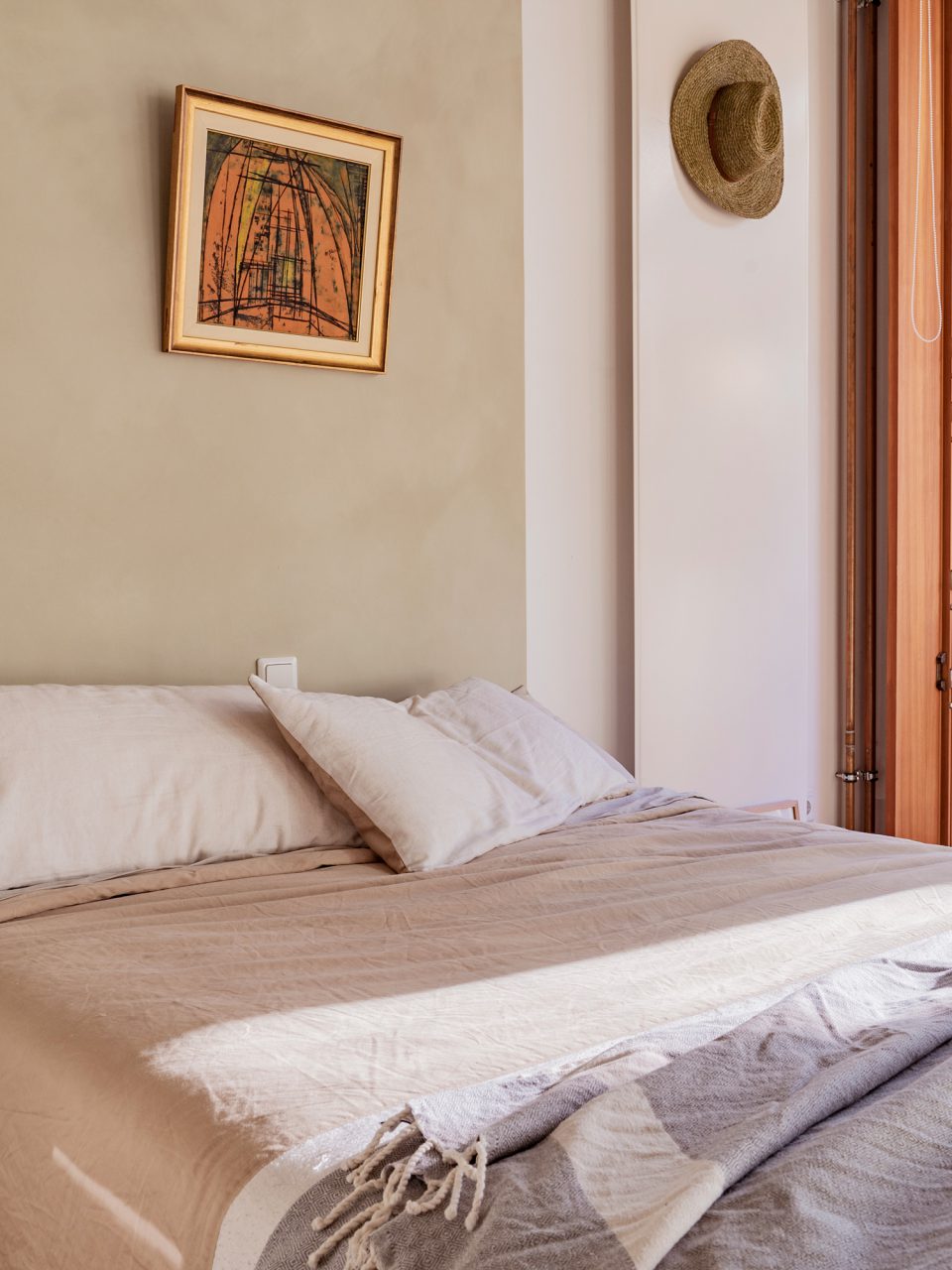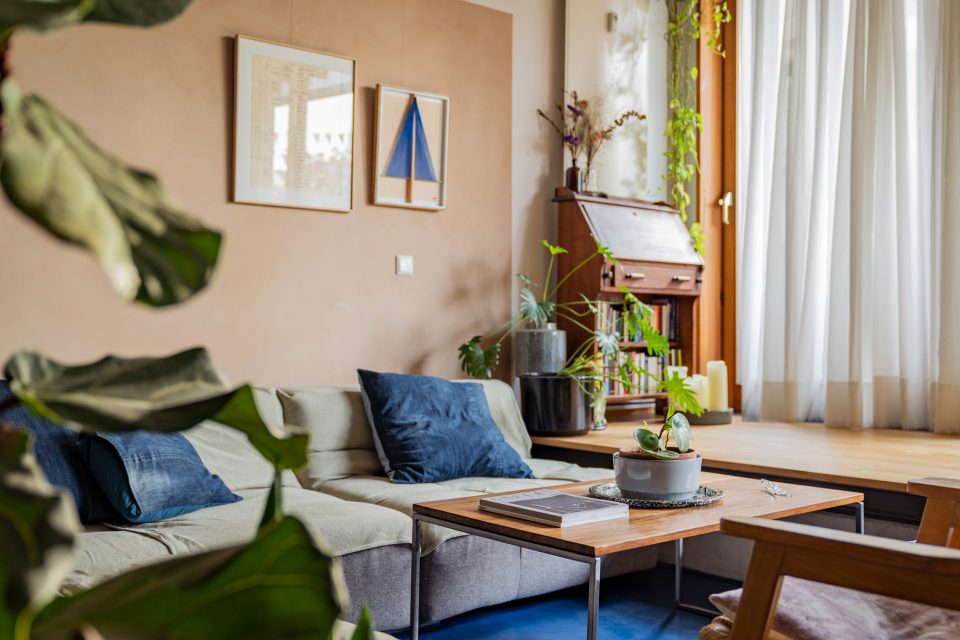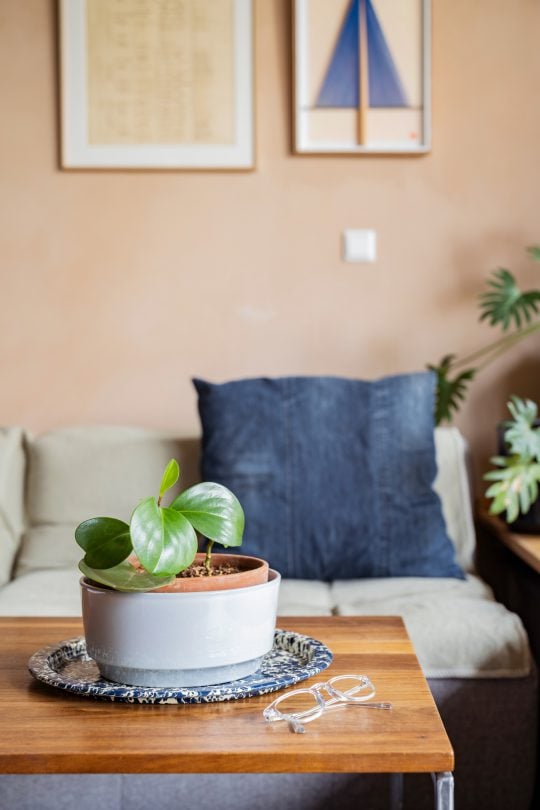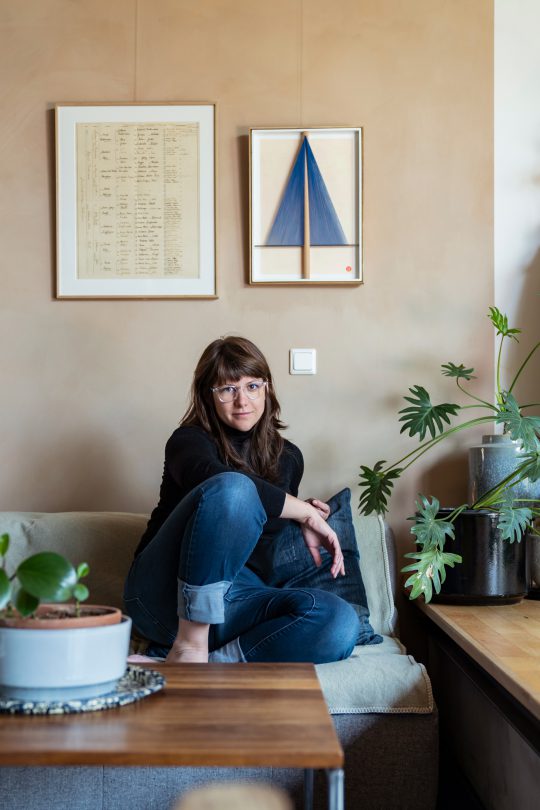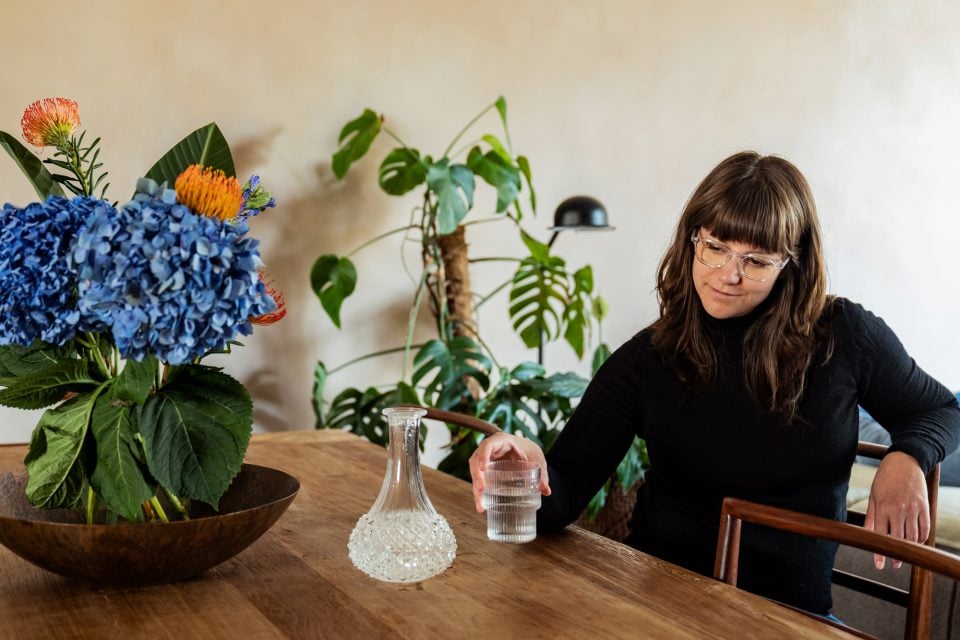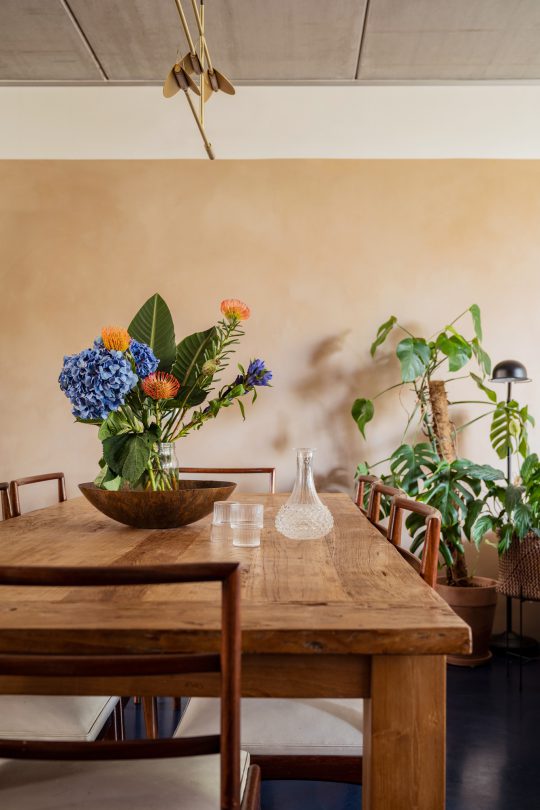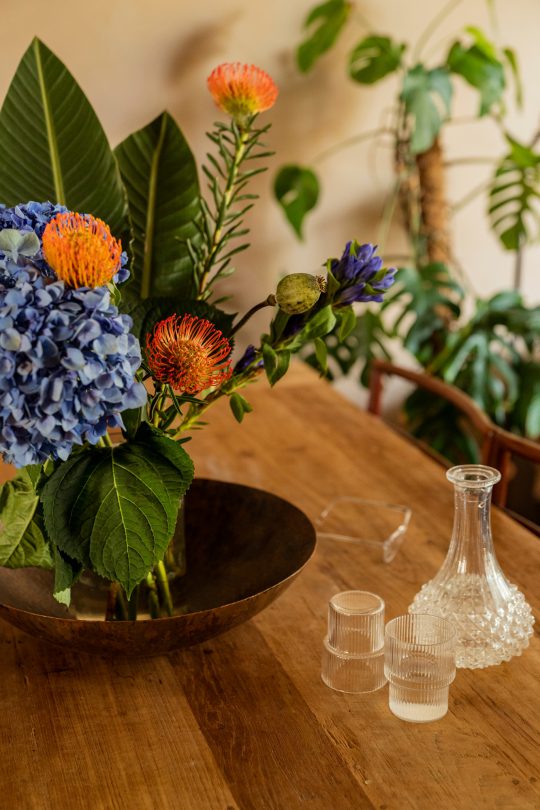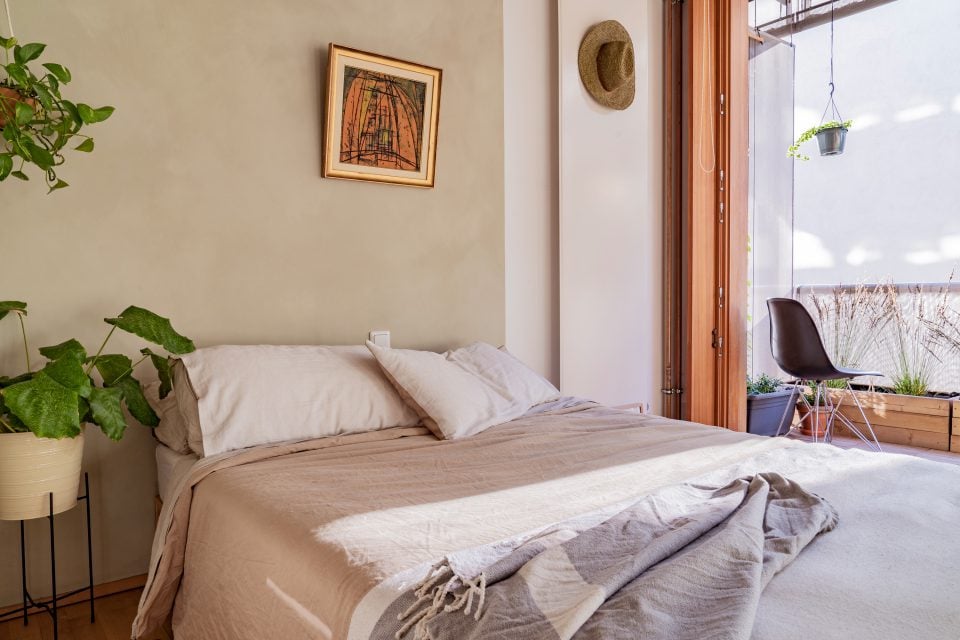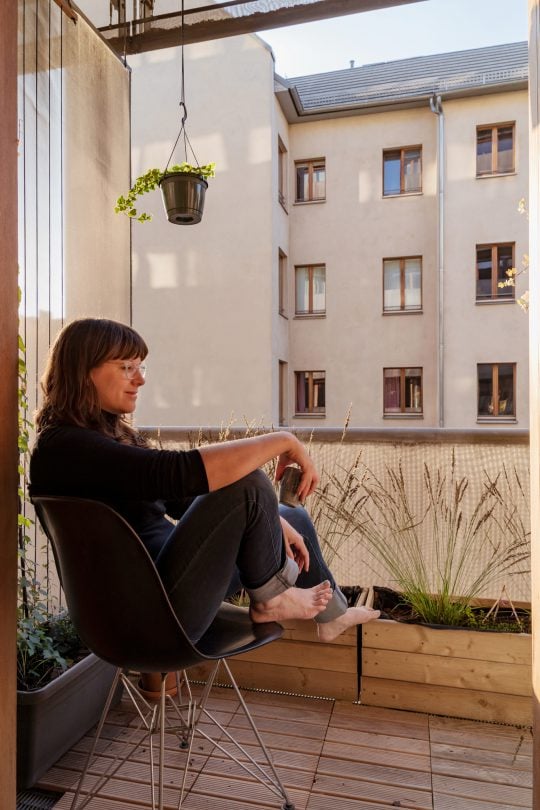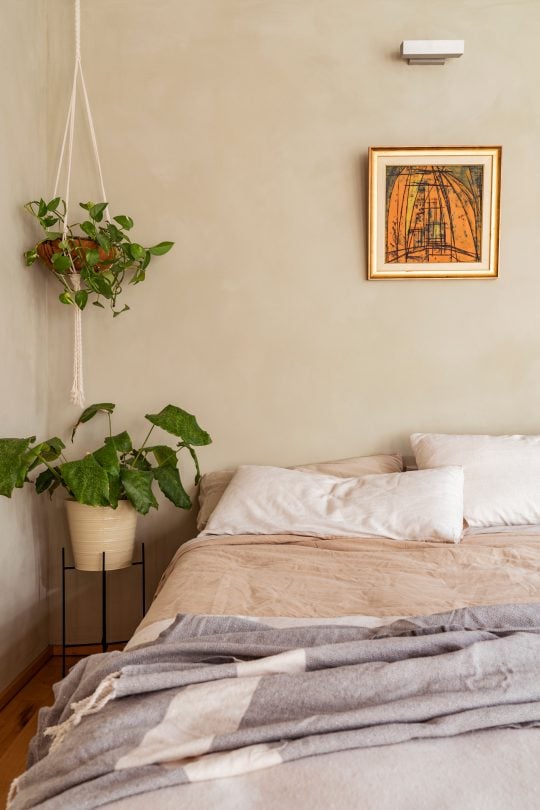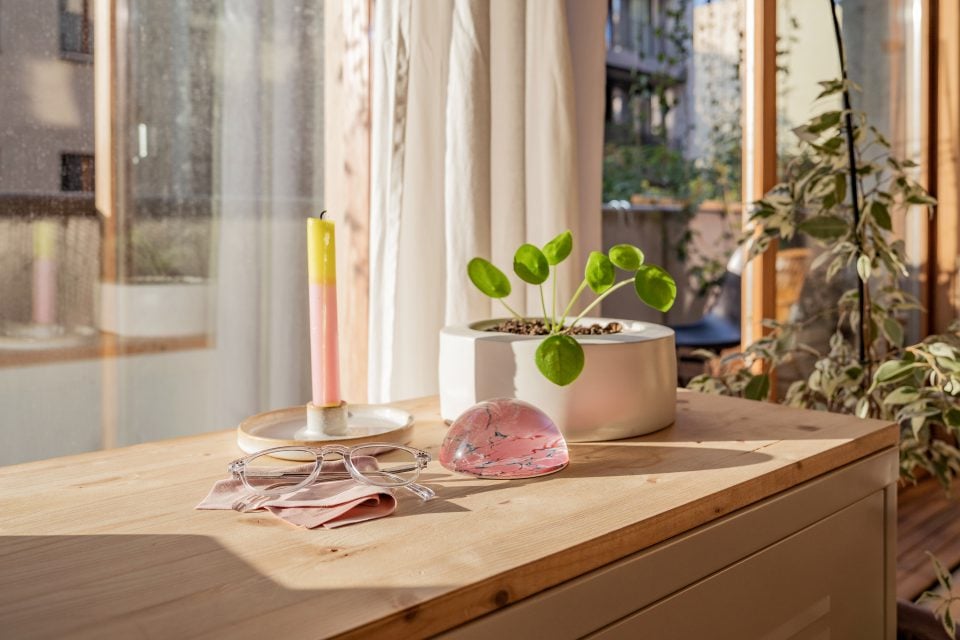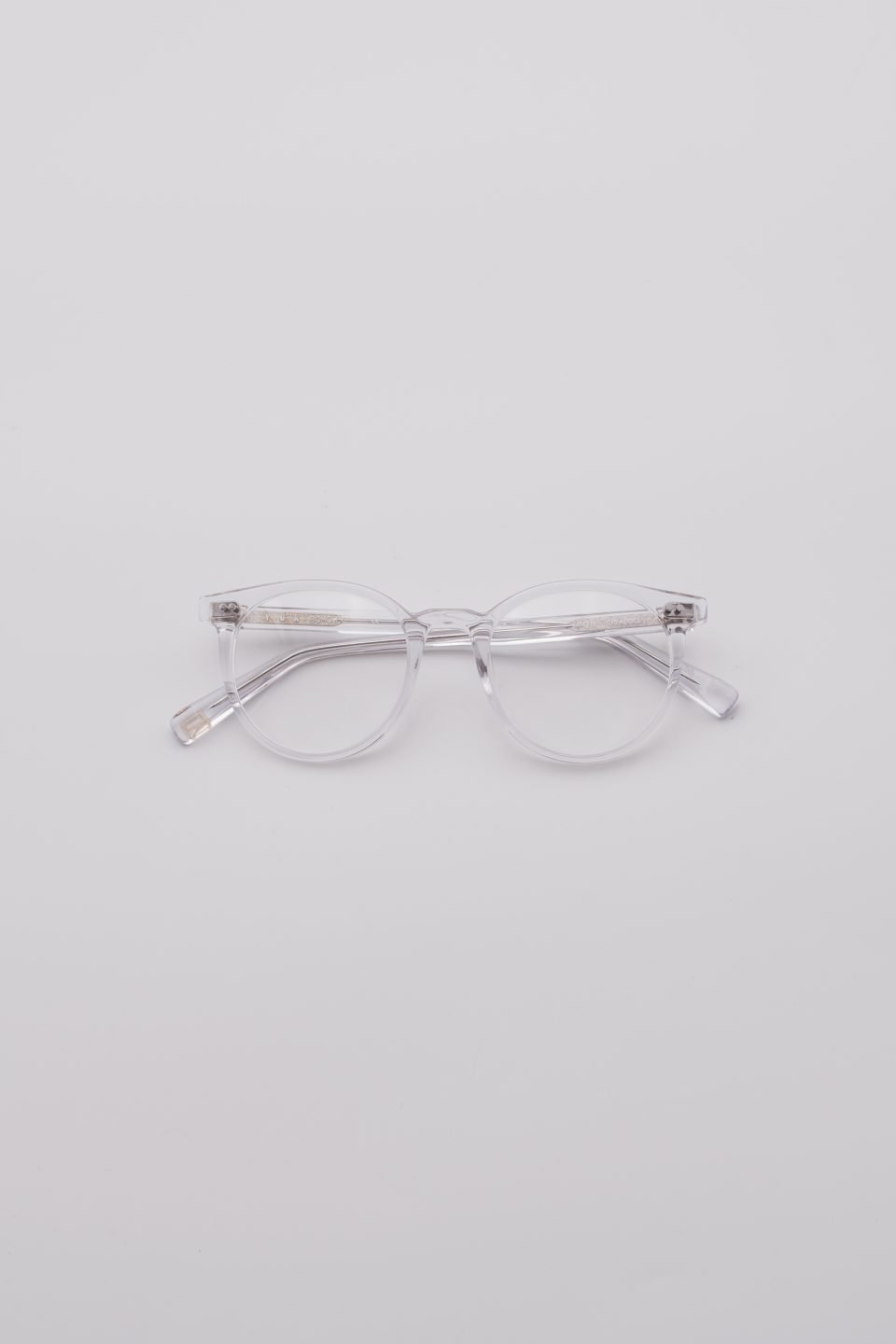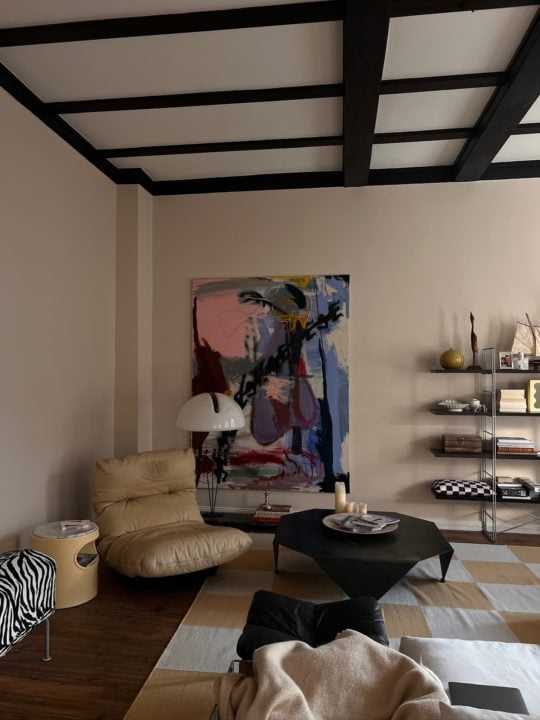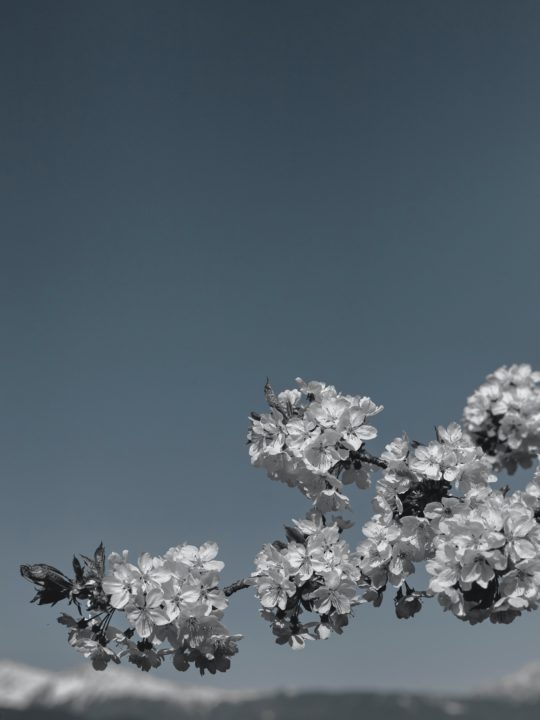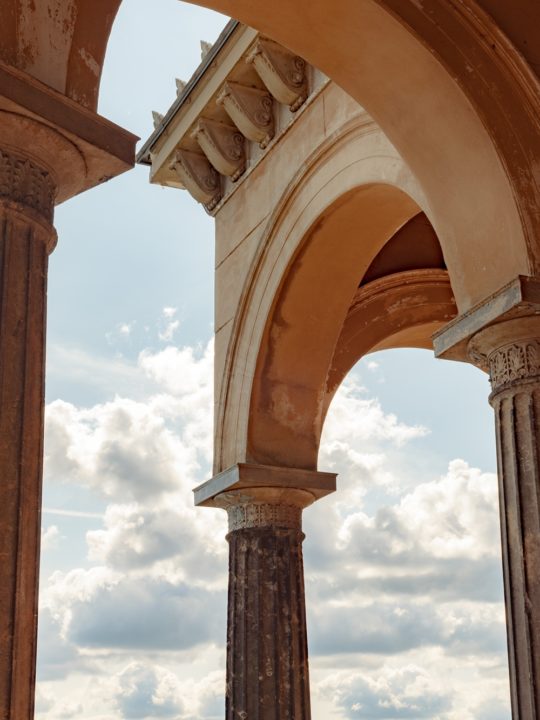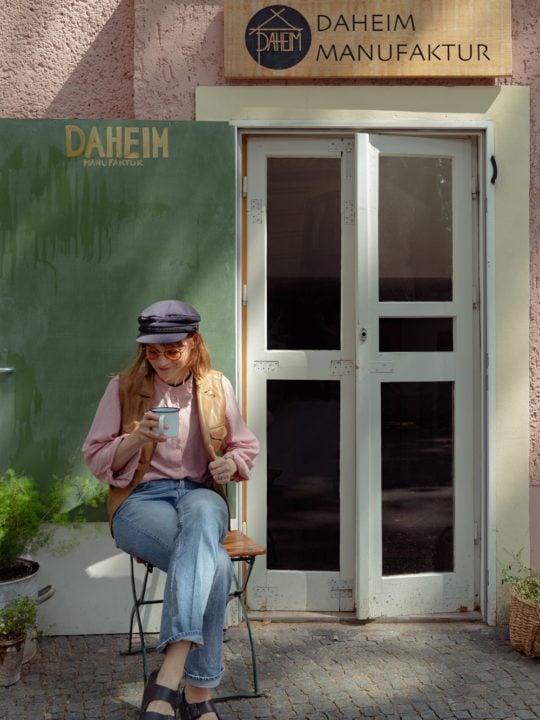SOONAFTERNOON FOUNDER BARBARA ON THE ROLE OF HOMES AS CREATIVE EXPRESSIONS OF IDENTITY
Barbara Cilliers in her own home.
Barbara Cilliers is a photographer, interdisciplinary designer and author from Berlin.
Last year her interior lifestyle blog Soonafternoon received the best newcomer award at the coveted Amara Blog Awards. The theme of home plays a dominant role in her stories, which centre around spatial explorations and conversations with creators and founders in their homes and creative spaces.
Here she shares her interpretation of home alongside her notions of aesthetics and finding magical moments in space.
Definition of home
“Home is a term with so many layers and meaning. It is both tactile and abstract. A place as well as a feeling. I’ve always been fascinated by the dichotomies tied up in this concept. How a home could serve as a public as well as a private space. A place where dreams are born, businesses founded, and art created. It serves our base level needs of shelter and allows us to delve into higher tiers of existential thinking.
It helps us live and define our cultures.
A home is a statement too; a three-dimensional canvas for creative expression. Of course this changes from person to person, and even those with a spartan or utilitarian approach to the home, inadvertently reflects an image of who they are.”
Home as an expression of identity
“Growing up my mom was always decorating, collecting art and painting the house. A mother to twin daughters, she encouraged us to develop our own separate identities. We always had our own rooms that she allowed us to decorate ourselves. For a long time I took it as a given, as common place, that the walls and objects you surround yourself with are there for your personal expression. Only when I grew up did I realize that this was not the case for everyone. Not everyone behaved in this way, and it was very much something you are conditioned to do–a learnt behaviour. I think it is important. It allows you to establish a sense of identity and a tone of voice. A way to explore who you are. For me it is important to have this sense of self. It grounds my internal compass.”
“I had an interesting conversation with an artist recently who grew up in the former GDR. This idea that you could “design” your home and space was engaging to her. The Soviet state did not have room for this kind of expression. People did not decorate or paint their houses in colour. That would signal that you consider yourself an individual with personal likes, dreams and desires. It smacked of individualism and therefore did not fit in with the totalitarian directives. It dawned on me how important it was to have this space where identity is permitted.”
Why an interior blog
“I grew up with interior magazines. My mum loves them and could never get herself to throw them out. So the Garden & Home and House & Leisure would pile up in heaps under her bed. We would crawl in there and pull out the heavy piles to play with. Hours would be spent amongst those dusty pages; exploring spaces again and again and dreaming of our own grown-up, one-day homes. We would use them as inspiration and draw our own plans and even started our own magazine once with the help of friends. The blog is just an updated version of that. A playful exploration of space.
Why interviews at home
“My interviews usually start with a cup of coffee at the kitchen table, setting the tone for the rest of our dialogue. I love connecting with people and hearing their tales. When you sit down with someone in their home, they are in their element. The space is not neutral.
I am always very aware of myself as a visitor to their territory, which dictates a conduct of respectful curiosity.
At the same time they are in their dominion which allows them to take their guard down and be truly themselves. They don’t just say what would be the right thing to say. They are grounded, open and honest. It’s like stopping by a friend for tea.”
Choosing spaces for stories
“The stories for Soonafternoon are always driven by the people. If I find myself drawn to what people do, then I approach them for a collaboration. I don’t always know what their home will look like, and I have to trust my instinct and the process. We all see the world so differently and there will always be a way for me to capture the space in a way that is special to me and hopefully the reader.
I like finding those magical moments.
It makes it interesting and different. I don’t want the pages to all look the same and it should be a surprise for the reader too.”
“Sometimes the spaces can be rather unusual. I quite like that. It also allows me to challenge my own ideas of aesthetics. Our own visual preferences are also conditioned and learnt behaviours. If you are exposed to one thing over and over again, you become so used to it that you do not question it any more. It becomes habitual instead of intentional. Choosing what you surround yourself with, is a practice in self awareness and requires critical self reflection from time to time.”
Personal design approach
“I like spaces that tell a story and where the objects in a space have a history beyond utility. Many pieces in my home come from South Africa and used to belong to my parents and their parents. Second hand things or even stuff I find on the street (much to my husband’s annoyance) are great for giving a space character. I also like making things myself or updating existing pieces to suit my visual vernacular.”
“Living in an open plan loft made me think of space differently too. Instead of rooms that serve a purpose I had to create corners or spaces for that function. This was quite hard. I’ve learnt too, that there needs to be a dialogue between objects. How they are perceived in relation to each other creates a narrative and sets the rhythm.”
Most important elements of a home
“I’d say the most important elements are definitely plants. In addition to cleaning the air, they make a space come alive by bringing another energy and life into the space. I have a big problem with plastic plants because it goes against this very notion–it is the antitheses of what plants are there for.
Large windows are an absolute must. They allow the ample sunlight needed to keep those green ones and my South African spirit alive.
There has to be a flow of light and air, a sense that the space continues outside (like a balcony or beautiful view) or some place out of view. Balance is another important element. Combining old and new pieces for instance or between positive and negative spaces. And then off course there are those things we do not see, like love and gratitude.”
Interesting homes on Soonafternoon
“I am currently working on a story that takes place in a restored “Bauernhouse” or farm house in Rädel. The owners have carefully restored the space in a way that is respectful to its history. Many original pieces and elements remain in the house, telling a story of its past. The barn, which now serves as a type of veranda or outside dining hall, still have the old antiquated farm equipment. Original stoneware still line the shelves. Now, alongside the carefully curated objects and art that the owners have collected over the years, the home is in a sense, a contemporary gallery of time itself. It is such a marvellous concept and a delight to explore and photograph.”

